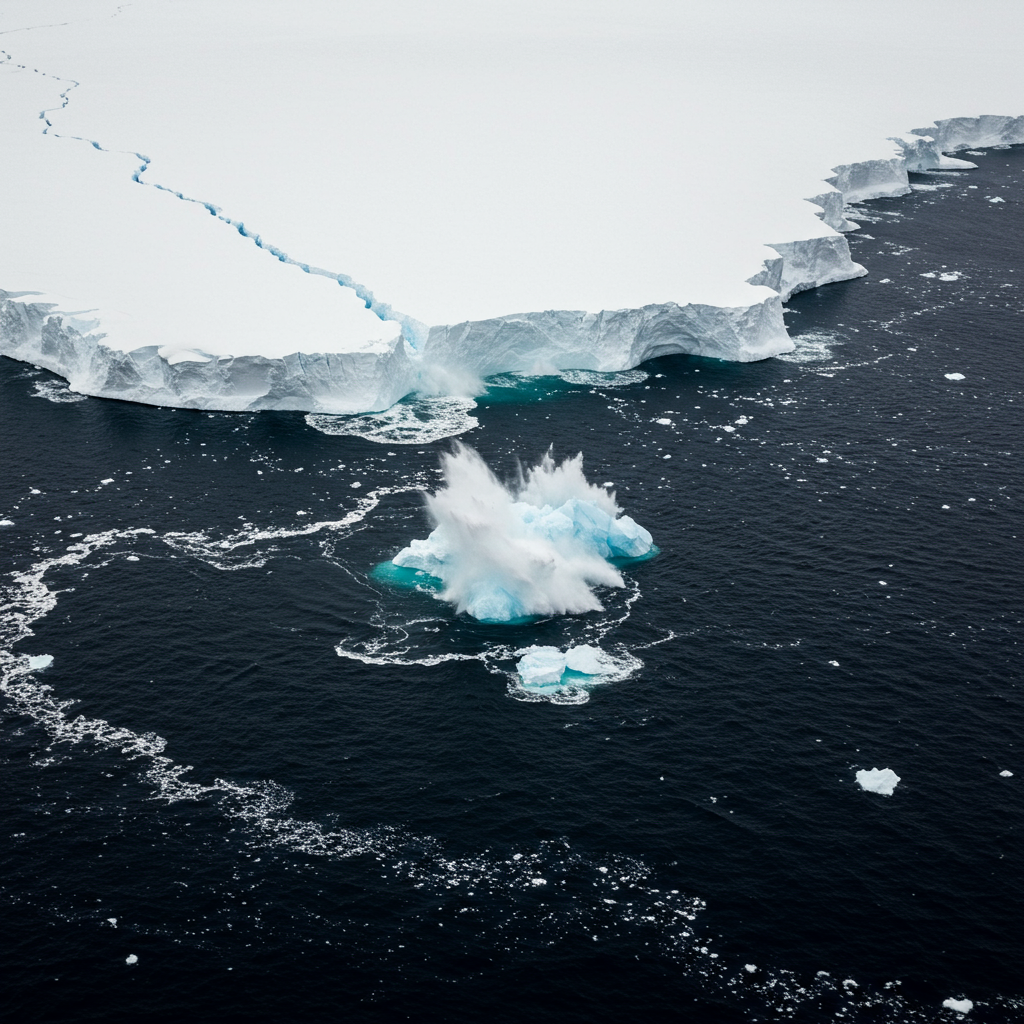The frozen continent of Antarctica is undergoing a dramatic transformation, driven by unexpected and alarming shifts in the vast southern ocean. Recent data confirms that this critical region is losing ice at an accelerating pace, with consequences that scientists warn could permanently alter global climate systems and sea levels. The findings reveal not only the sheer scale of the ice loss but also the complex, surprising mechanisms at play beneath the surface of the ocean.
Since 2015 alone, Antarctica has shed a staggering amount of ice – a volume equivalent to the entire ice sheet covering Greenland. This rapid retreat isn’t just a simple surface melt; it’s intricately linked to a fundamental change in the ocean waters surrounding the continent. For decades, observations indicated a trend of freshening in the Southern Ocean’s surface layers, a condition that helped maintain the stability of sea ice. However, this long-standing pattern has abruptly reversed.
Southern Ocean’s Salinity Surge: An Unexpected Driver
The most surprising revelation centers on a sudden surge in the Southern Ocean’s surface salinity. Rather than becoming fresher, the waters are growing saltier. Detected through a combination of advanced European satellite data and sophisticated oceanographic instruments, this shift has profound implications for the region’s delicate balance.
Scientists explain that this increase in saltiness weakens the natural stratification of the water layers. Normally, distinct layers of water with different densities and temperatures remain separate. The rise in salinity disrupts this natural barrier, allowing warmer, deeper ocean waters to mix more readily with the surface layers. This upwelling of heat from below provides a powerful, unseen force melting the protective sea ice cover.
The Maud Rise Polynya: A Fifty-Year Return
A particularly dramatic indicator of these unprecedented changes is the reappearance of the Maud Rise polynya. This massive area of open water within the sea ice had not been observed since the 1970s. Its sudden return, spanning an area nearly four times the size of Wales, is directly tied to the rising salinity and the subsequent access of deep ocean heat to the surface.
Dr. Alessandro Silvano, a lead researcher on this topic, has highlighted that the return of this vast polynya signifies the unusual conditions now dominating the Southern Ocean. He cautions that if this salty, low-ice state persists, it could fundamentally reshape the region and, by extension, the entire planet’s climate system.
A Dangerous Feedback Loop Accelerates Change
The interaction between the increasing salinity and the shrinking sea ice creates a dangerous feedback loop. As sea ice melts, it exposes the darker ocean surface. This exposed water absorbs significantly more solar radiation than reflective ice, warming the ocean further. This increased warmth then leads to even more ice melt, intensifying the cycle.
This accelerating feedback loop is not confined to the polar regions. Its effects ripple globally, contributing to more volatile weather patterns and stronger storms. While Antarctic sea ice melt itself doesn’t directly raise sea levels (because it’s already floating displacement ice), the warming ocean water contributes to sea level rise through thermal expansion. Furthermore, the dramatic changes in the Southern Ocean interact with global ice loss trends. Data analysis covering two decades (2000-2023) shows that glaciers worldwide, outside of the main Antarctic and Greenland ice sheets, are losing an average of 273 billion tonnes of ice annually, a rate that has accelerated significantly in the past decade. This global glacier melt is a major contributor to rising sea levels, adding context to the scale of polar ice challenges.
Global Impacts Far Beyond the Ice
The retreat of sea ice alters the Earth’s albedo effect, reducing its natural ability to reflect sunlight and amplifying global warming. This contributes to more extreme weather events globally. Polar ecosystems are also under immense pressure. Species like penguins and seals, reliant on sea ice for hunting, breeding, and survival, face shrinking habitats and disrupted food chains. Global sea ice extent recently hit a record low in February 2025, with particularly drastic reductions noted in both the Arctic (8% below average) and Antarctic (26% below average), underscoring that these are interconnected, global phenomena. Changes in the Arctic, for example, where the tundra is shifting from absorbing carbon to releasing it due to permafrost thaw and wildfires, offer a troubling parallel to the instability seen in the Antarctic.
Beyond climate impacts, global glacier melt also poses a direct threat to freshwater supplies for communities relying on glacier-fed rivers. The amount of water lost from glaciers annually is equivalent to 30 years of global human water consumption.
The Critical Need for Enhanced Monitoring
The unexpected nature of the Southern Ocean’s shift, particularly the reversal of the salinity trend and the return of the Maud Rise polynya, highlights gaps in our current understanding of Antarctic climate dynamics. Professor Alberto Naveira Garabato, a co-author of relevant studies, stresses that existing models may be insufficient to accurately predict future changes.
This scientific uncertainty underscores the urgent need for enhanced, continuous monitoring of the Southern Ocean. Satellite observations, combined with in-situ data collected from the ocean itself, are crucial for tracking evolving conditions in real-time. Without more robust data collection and improved modeling, scientists face significant challenges in forecasting the long-term environmental impacts and developing effective strategies to mitigate the consequences of these dramatic shifts in the ice-ocean system. Understanding the drivers behind these changes is paramount for anticipating and preparing for their global repercussions.
Frequently Asked Questions
What is causing the rapid Antarctic sea ice loss from below?
Scientists have identified a surprising increase in the surface salinity of the Southern Ocean. This increased saltiness weakens the natural layering of the water, allowing warmer, deeper ocean waters to rise to the surface. This upwelling brings heat that melts the sea ice from beneath, a significant departure from historical melting patterns.
What is the significance of the Maud Rise polynya reappearing?
The Maud Rise polynya is a large area of open water that forms within the sea ice. It hadn’t been seen since the 1970s, making its recent reappearance a dramatic indicator of unusual conditions. Its return is directly linked to the rising ocean salinity and the resulting subsurface melting, signaling a significant instability in the Southern Ocean’s ice-ocean system.
How does Antarctic sea ice loss impact the rest of the world?
While melting sea ice doesn’t directly raise sea levels, its loss has global repercussions. It reduces the Earth’s ability to reflect sunlight (albedo effect), accelerating global warming. This contributes to more volatile weather patterns and stronger storms worldwide. The warming ocean water also contributes to sea level rise through thermal expansion. Furthermore, polar ecosystem disruption impacts wildlife and food chains, and these regional changes are connected to broader global trends like accelerating glacier melt and record low global sea ice extent.




